Share
These days, there are so many ways to purchase something from a business. Your customers aren’t going to go out of their way to buy something if you don’t offer an omnichannel experience. An omnichannel retail and eCommerce approach is key to reaching a wider audience.
When you’re offering shopping opportunities in a brick-and-mortar store, website, online marketplaces, social media, and more, you’re meeting your customers where they prefer to shop.
But more than that, when you connect these channels so that purchase history, loyalty points, shopping carts, and other features are synced, you can easily bring in more sales and improve customer loyalty and retention.
If you’re just getting started creating an omnichannel strategy, and you’re looking for inspiration on the best channels to use, we’ve put together 27 omnichannel retail examples to show you how brands, both big and small, are enabling customers to shop across a variety of different channels.
So, without further ado, let’s get started.
1. Sephora
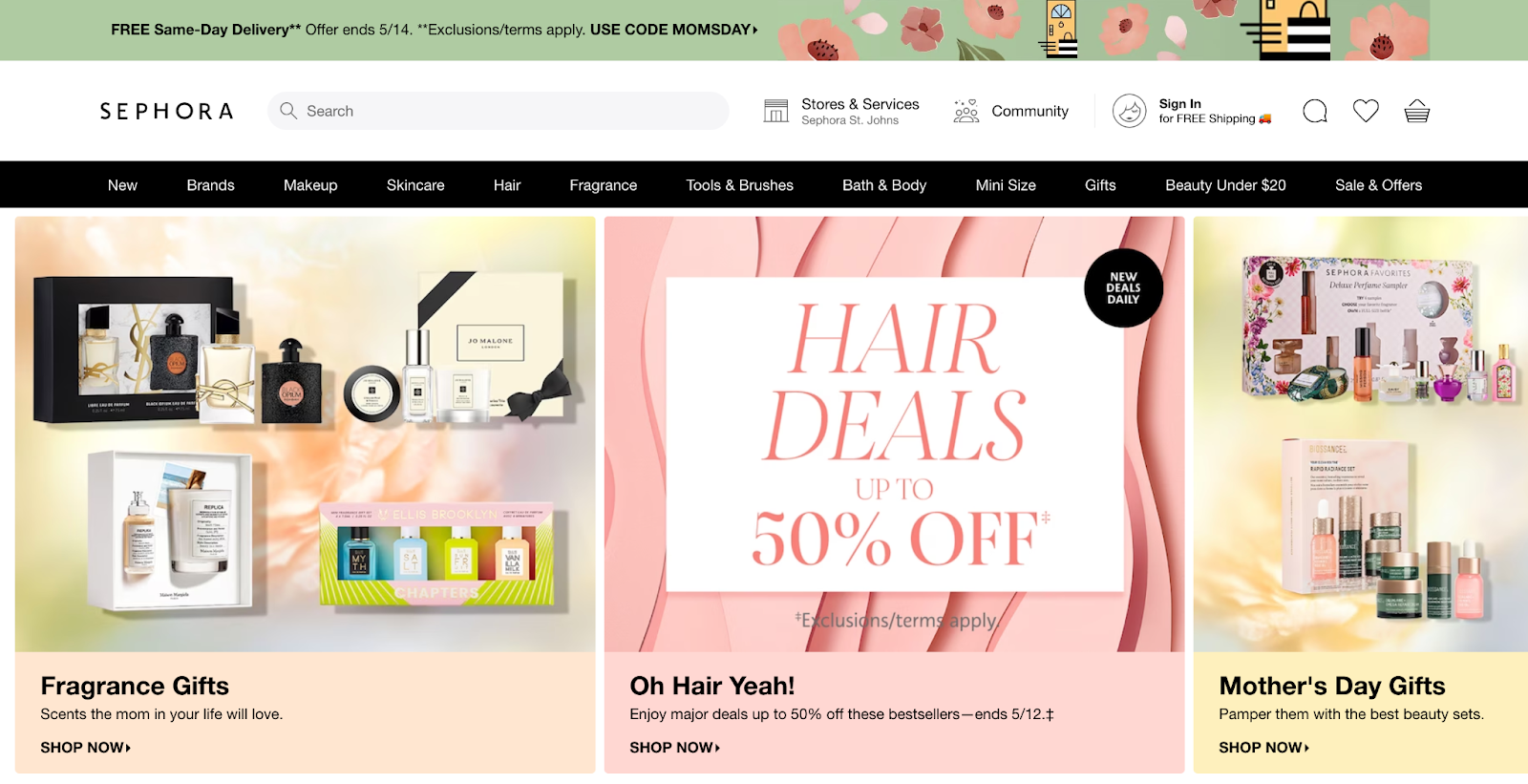
Sephora is a makeup and skincare retail giant. Many brands in that industry sell their products through Sephora, with the company acting as a sort of retail marketplace. However, Sephora in itself does a great job of omnichannel retail, ensuring that its own products and the products it carries are available across a number of platforms.
Channels used include:
-
Retail locations
-
Online website
-
Mobile app
-
Social media platforms Facebook, Instagram, Pinterest, and TikTok
The biggest component of Sephora’s omnichannel strategy is the brand’s loyalty program Beauty Insider. It’s free to join, and regular Sephora shoppers can easily keep track of both in-store and online purchases—they simply need to log into their account online or provide their phone number to a store associate.
With this in mind, customers can easily cross over their preferred shopping channel and still be able to find the right shade of foundation or brand of mascara they’ve bought before without having to go into a store and be color matched.
This record ensures Sephora’s customers are satisfied and that the brand is easy to shop with, boosting customer loyalty.
2. Orvis
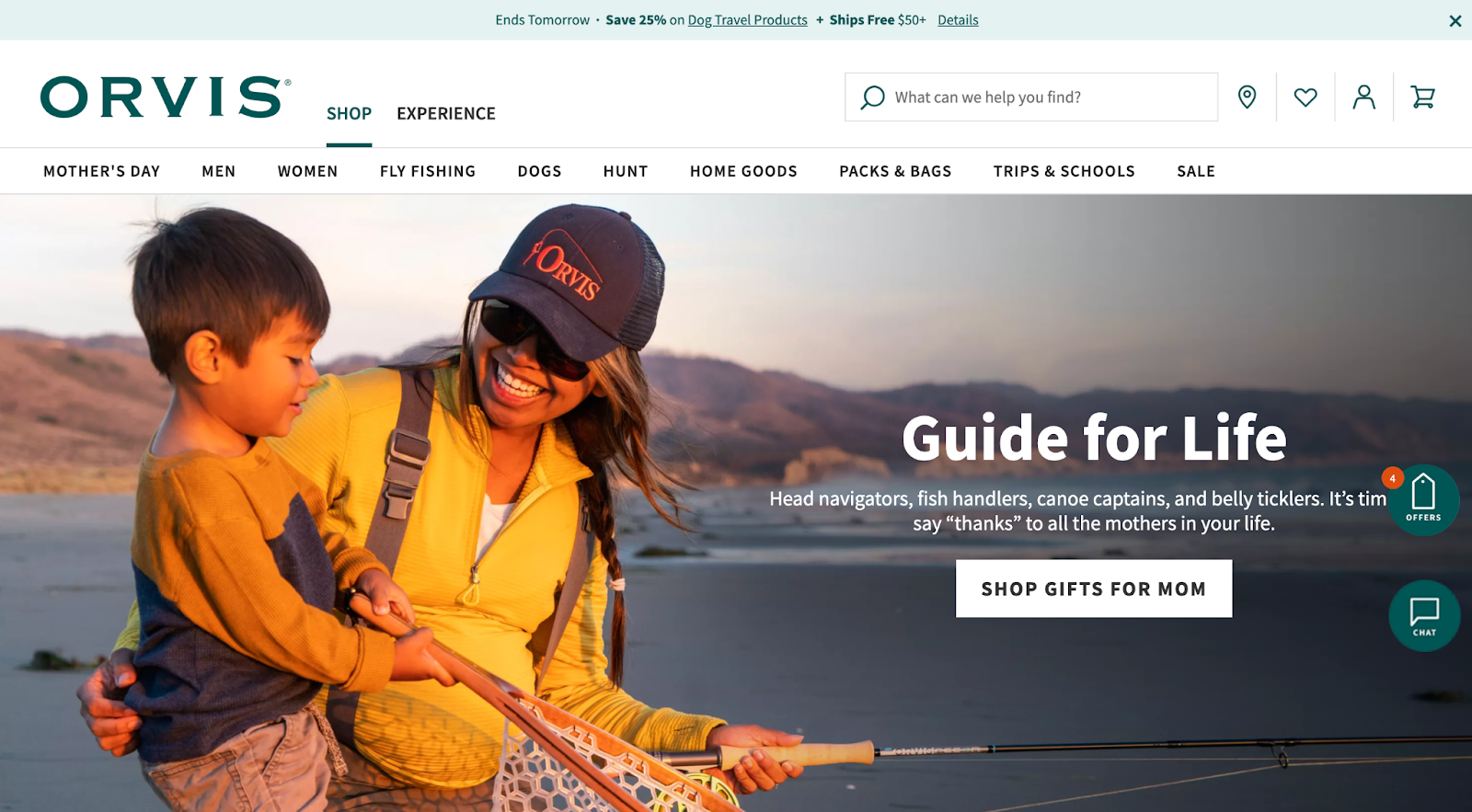
Orvis is an outdoor brand specializing in fly fishing gear and apparel, and the brand has literally won an award for its omnichannel strategy.
Channels used include:
-
Retail locations
-
Online website
-
Social media platforms Instagram and Pinterest
-
Amazon storefront
And while all of those channels meet customers where they want to be, the POS (point-of-sale) system the brand uses is what really ties the entire experience altogether. The platform enables sales associates to use iPads while out on the sales floor, helping the in-store experience to match the online experience seamlessly.
Sales associates can now order out-of-stock items, process payments, find similar products, and more right on their tablets. This ensures each retail location provides a seamless experience to every single customer, meeting their needs and matching the experience to an online shopping approach.
3. Busy Baby Mat

Busy Baby Mat, previously seen on Shark Tank, is an enrichment toy for young children in a high chair, shopping cart, etc., to keep babies and toddlers entertained and “busy.” The shop’s tagline is, “Products designed to keep baby's toys off of the floor!”
Channels used include:
-
Online website
-
Shoppable videos
-
Social media platforms Facebook, Instagram, and TikTok
-
Amazon storefront
Busy Baby Mat also has a few retail partnerships and can be seen on sites like Olita. By offering its products on a number of online sites and marketplaces, Busy Baby Mat is ensuring the brand is meeting its customers where they most prefer to shop.
With its Amazon storefront, consistent Amazon shoppers can easily add a mat to their cart alongside other products. With social media shopping channels, users of each social platform can easily discover and buy their products. And, of course, with an online store, it helps provide a home base for the omnichannel experience.
4. Amazon
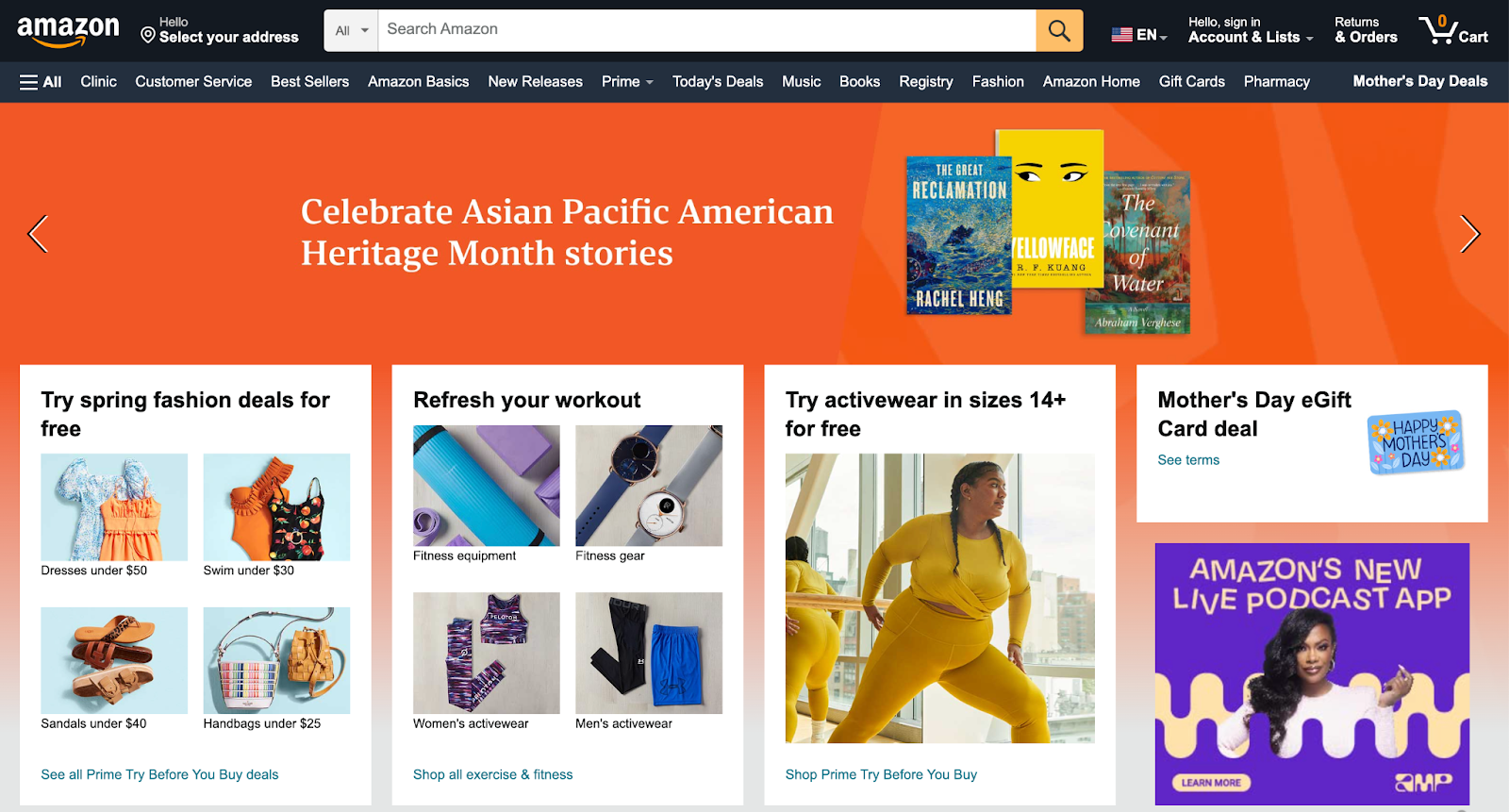
Amazon is probably the largest online retailer on the entire internet. In fact, many of the brands we’re using as examples have an Amazon storefront as a part of their omnichannel customer experience. However, Amazon still has a huge place in our list of omnichannel marketing examples.
Channels used include:
-
Online website
-
Mobile app
-
Social media ads
-
Alexa home assistants
-
Kindle store
Not only does Amazon offer its own branded products, it works as a marketplace for other brands, but it also offers an endless array of products—eBooks as part of its Kindle offerings, audiobooks from Audible, movies and TV shows from Prime TV, music from Prime Music, and so much more.
More than that, all of these can seamlessly be purchased (and order records kept) via any Amazon channel—the online website, mobile app, Alexa/Echo home assistants, and more. Plus, Amazon runs endless social media ads to help users discover even more great products.
5. Target
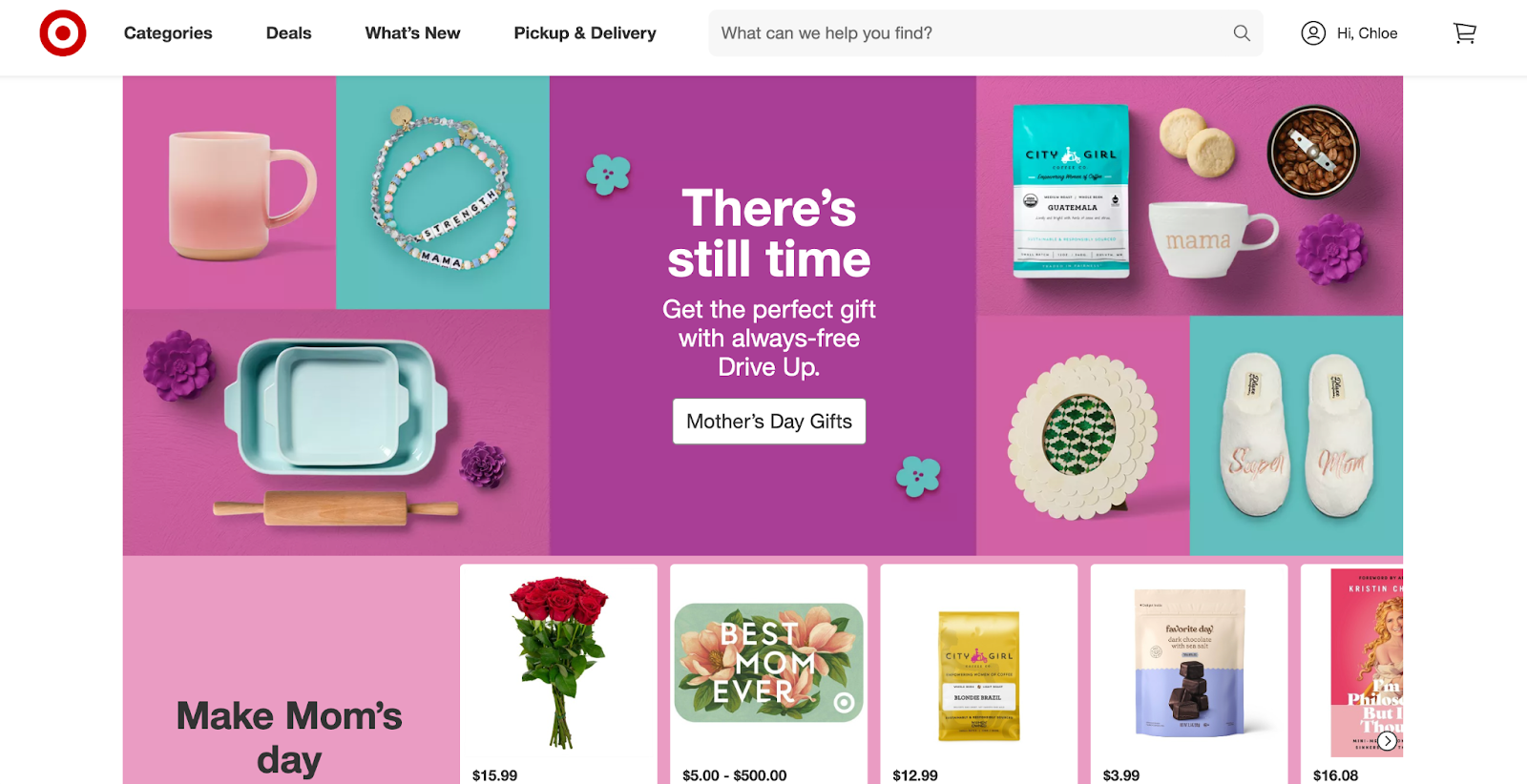
Target is slightly similar to Amazon in that it’s a massive retail company. Not only do they provide Target-branded products, but they also sell products from other brands as well. Many brands also have Target-exclusive product lines and collections that are sold in Target stores and on its website.
Channels used include:
-
Retail locations
-
In-store pickup
-
Order pickup
-
Online website
-
Mobile app
-
Social media ads
Target allows customers to create their own accounts to track in-store purchases or a desktop or mobile device. By typing in their phone number at in-store checkout, purchases are kept within a customer’s account, making it easy for them to re-order and keep track of all products they’ve bought at Target.
Plus, customers who prefer shopping online but might not want packages delivered to their homes can opt for in-store pickup or choose to use Target’s order pickup option. With this, Target store associates will put together a customer’s order for them, then bring it out to their car when they pull into the designated pickup lanes.
6. Oasis
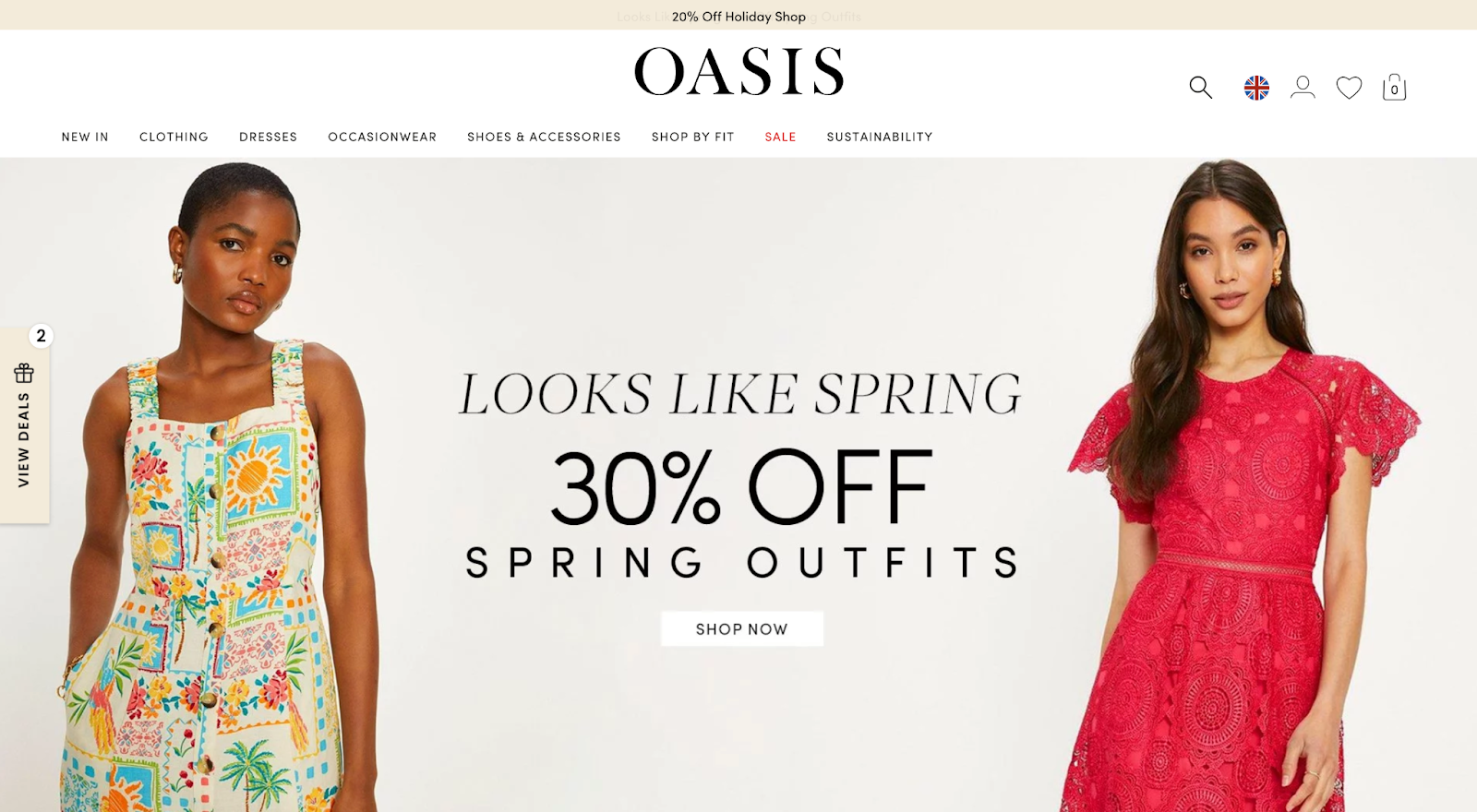
Oasis is a UK-based fashion retailer offering a seamless customer experience across its online and brick-and-mortar stores.
Channels used include:
-
Retail locations
-
Online website
-
Mobile app
-
Social media channels Facebook and Instagram
Store associates in Oasis retail locations are equipped with an iPad that enables them to assist customers in the exact same way the brand’s online website would. Associates get 100% up-to-date information about product availability, can easily place an online order for customers when products are sold out, and can even check customers out so they don’t have to wait in line.
Customers that have shopped in-store before will then be innately familiar with the shopping process if they choose to go onto the website and make a purchase.
7. RIFRUF
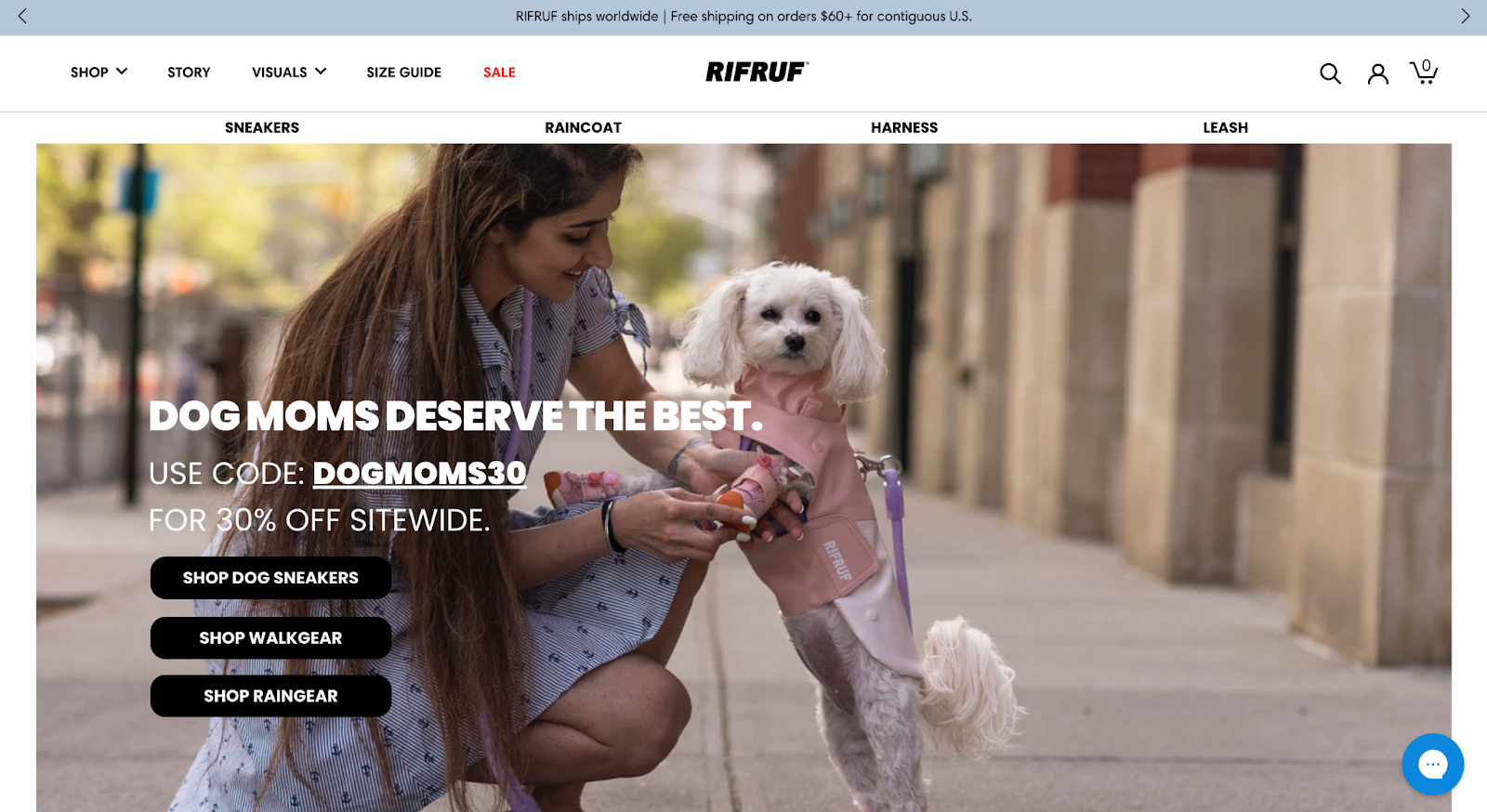
RIFRUF sells dog accessories like sneakers, coats, harnesses, and leashes.
Channels used include:
-
Retail partner locations
-
Online website
-
Shoppable video
-
Wholesale
-
Social media platforms Facebook, Instagram, and Pinterest
RIFRUF owns some of its own channels, like its website and social platforms, but it also makes sure to place products at relevant partner retailers, like small boutiques worldwide. Because it offers wholesale on its website, pet stores that want to carry RIFRUF’s products can reach out on their own accord to get that business relationship started.
However, another unique channel that RIFRUF is taking advantage of is shoppable video. By embedding shoppable videos on its website's home page and product pages, RIFRUF can even more easily reach customers interested in buying a product featured inside the video.
8. Blogilates
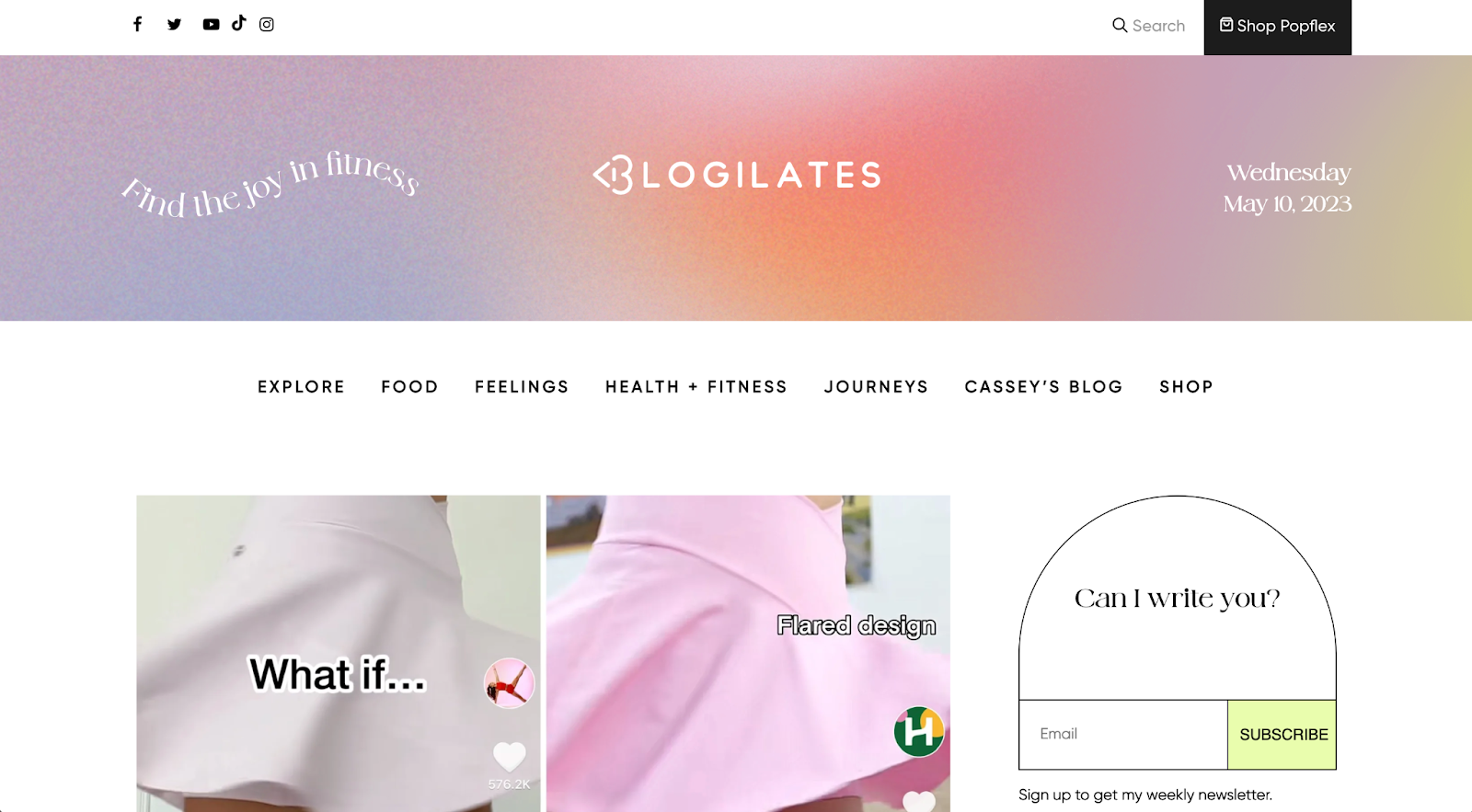
Blogilates is run by Cassey Ho and started as a blog and YouTube channel sharing pilates workouts and healthy living tips. Cassey has since grown the brand and now has her own products that she sells through the brand names Blogilates and Popflex.
Channels used include:
-
Target partnership
-
Online website
-
Social media platforms Facebook, Instagram, and Pinterest
Her Blogilates products are available with an exclusive Target partnership, but she still links out to them on her own website, helping interested customers find them more easily. She also sells her Popflex Activewear products on her online website and on social media platforms, enabling customers to shop where they prefer.
9. Benefit Cosmetics
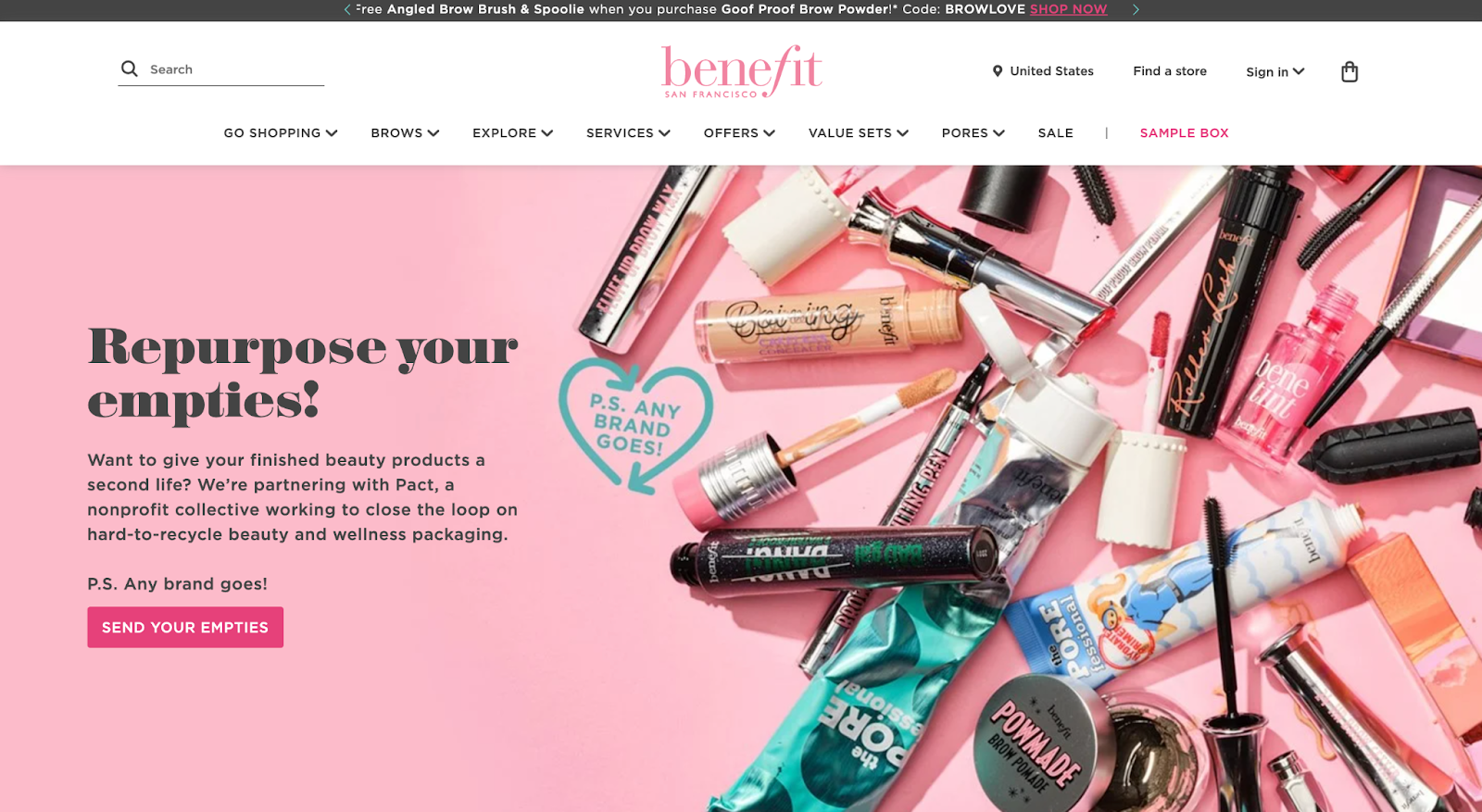
Benefit Cosmetics is a cosmetics brand that partners with retailers like Sephora to put its products on Sephora’s shelves. But that’s only one channel of the brand’s omnichannel strategy.
Channels used include:
-
Retail partner locations
-
BrowBar
-
Online website
-
Social media platforms Facebook, Instagram, and TikTok
Aside from its partner retailers, Benefit has also launched its own “BrowBars,” or brick-and-mortar locations that offer brow services. These types of experiences tie in well with the products the brand offers and are often done in locations where customers can buy said products (like Macy’s and Ulta).
Customers can also take advantage of Benefit’s online store and integrated social media shops to make purchases as well. With the same products and same type of customer service offered across the board, the omnichannel strategy helps to provide a seamless shopping experience.
10. IKEA
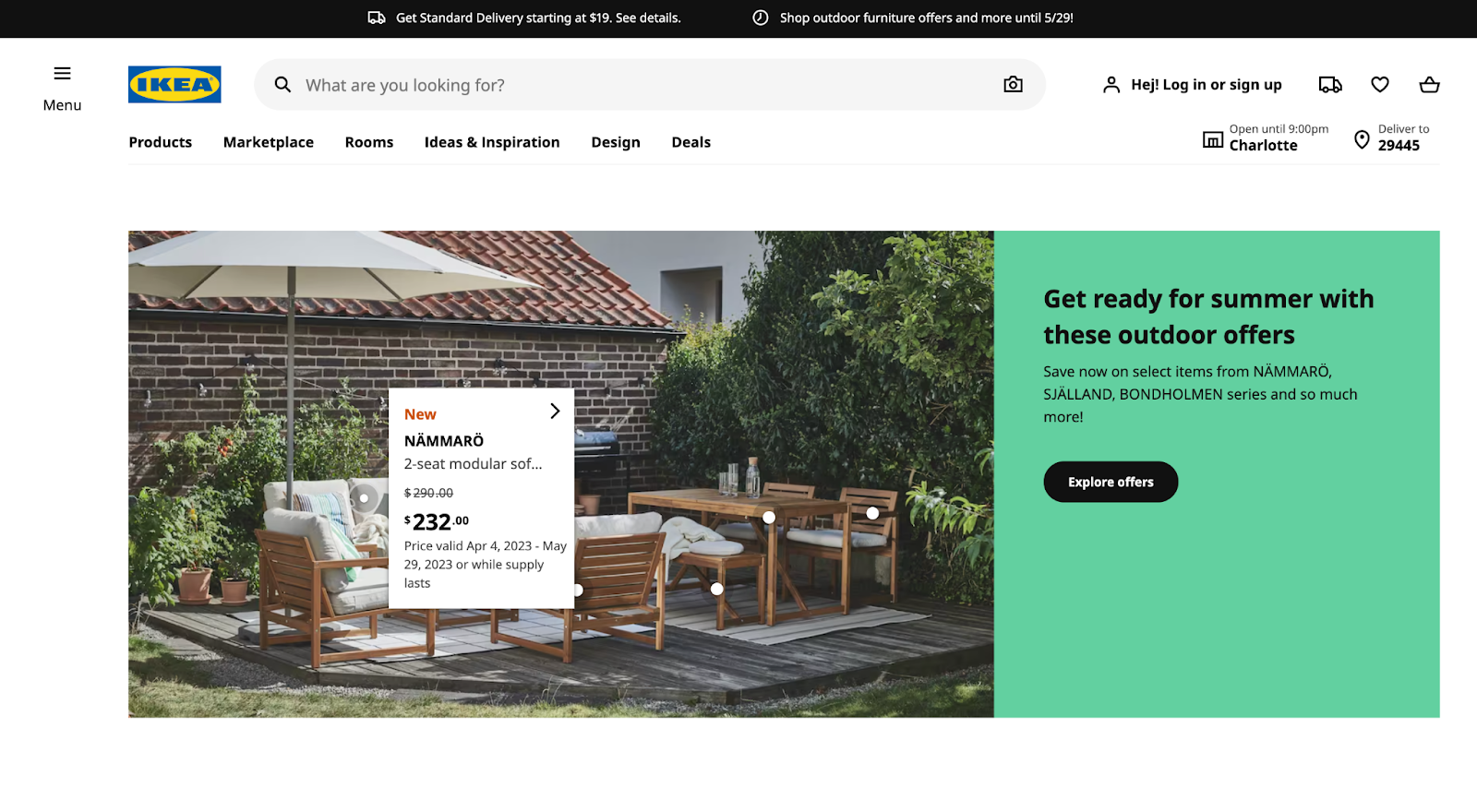
IKEA is a Swedish retail giant with brick-and-mortar stores across the globe. These stores are well-known for being mammoth buildings with arrows on the floor to help guide customers around and ensure they don’t get lost. But they’ve built a great omnichannel strategy as well, and were one of the first major retailers to do so.
Channels used include:
-
Retail locations
-
Online website
-
Mobile app
-
AR furnishing
-
Social media ads
-
Social media platform Pinterest
One of the first major omnichannel tactics IKEA implemented was its buy online, pick up in store policy. Customers could easily shop from their homes, then drive to the nearest IKEA store to pick up their products.
Now, customers can do so much more online. They can complete the entire shopping, checkout, and delivery process online. They can take advantage of the AR (augmented reality) furnishing feature and get an idea of how various pieces of furniture would look in their homes before buying. They can see ads and products on social media that inspire them to buy. And so much more as a part of IKEA’s omnichannel strategy.
11. Crate & Barrel
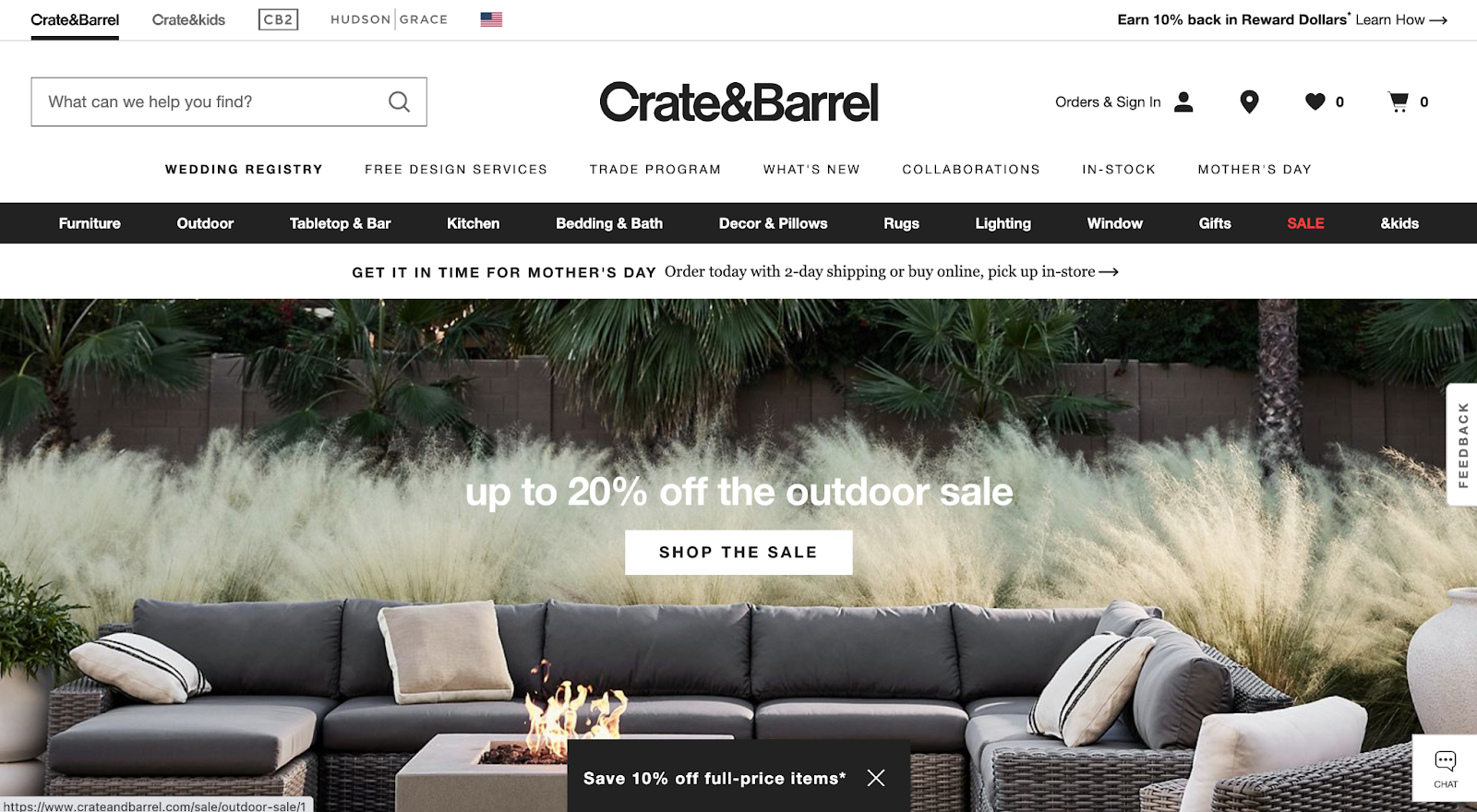
Crate & Barrel is a popular home furnishings and decor company that understands that most of its target audience is shopping from multiple devices and multiple channels. People go in-store and research products on their mobile devices, or they switch from desktop computers to mobile apps to learn more.
Channels used include:
-
Retail locations
-
Online website
-
Mobile app
-
Social media platforms Facebook, Instagram, and Pinterest
With Crate & Barrel, customers are able to create accounts. When logged into their accounts, their browsing history and cart, data is synced across devices, making it easier than ever to start the customer journey on their computer but finish it from their mobile device. This is the core of omnichannel shopping.
12. Warby Parker
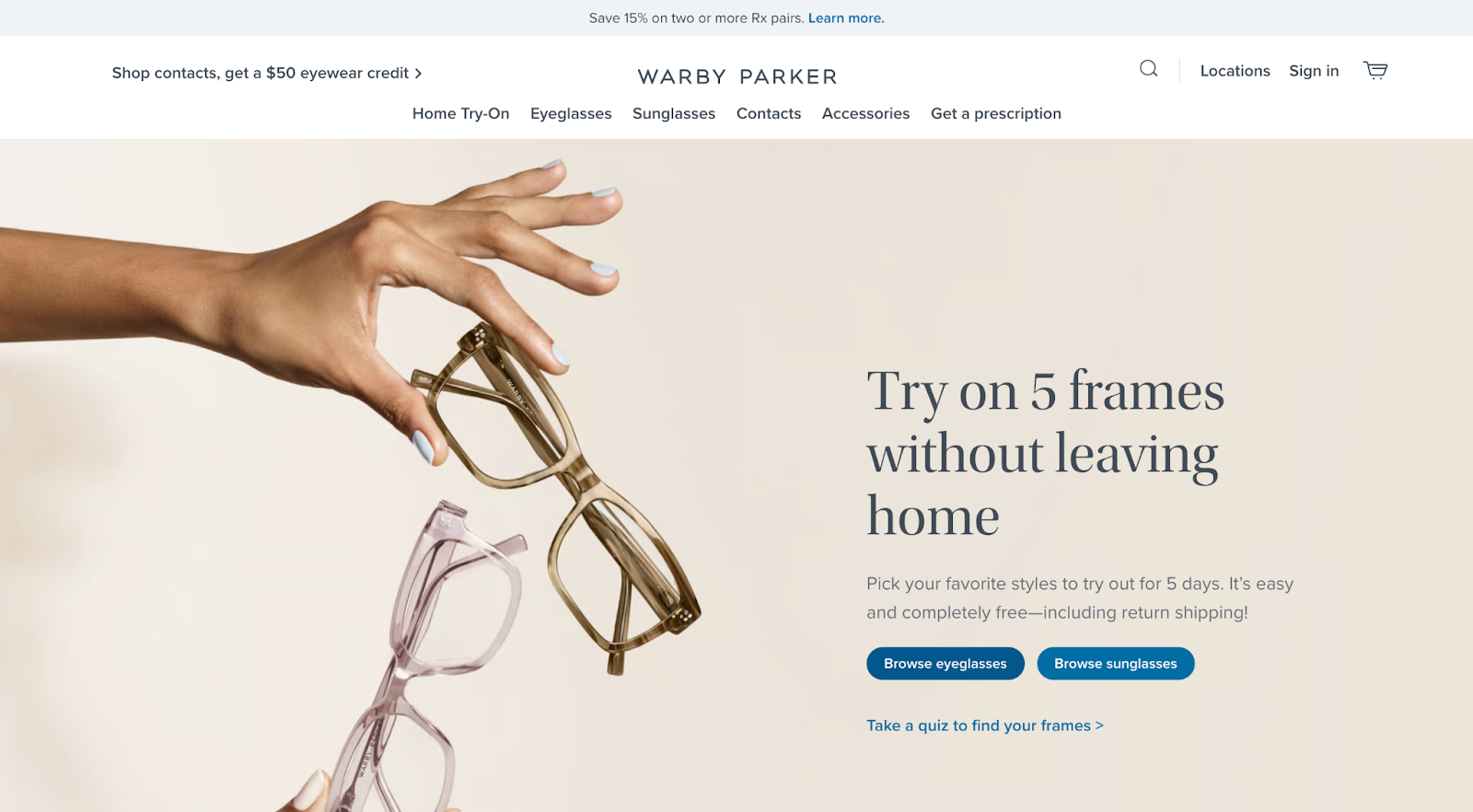
Warby Parker is a prescription glasses and sunglasses company that offers affordable eyewear without the hassle of going through an optometrist.
Channels used include:
-
Retail locations
-
Online website
-
Home try-on
-
Mobile app
-
Social media platforms Facebook, Instagram, and Pinterest
One of the best features of Warby Parker’s omnichannel strategy is its at-home try-on. Customers can browse the website, choose up to five pairs of frames they’re interested in, then order five pairs to be shipped to their home to try on completely for free before deciding on the right pair.
Although Warby Parker also has some of its own brick-and-mortar locations, the ability to offer this same in-store experience to online customers is what has solidified the brand’s place in the industry and has also inspired a number of other companies and industries to offer similar options.
13. Apolla Performance Wear

Apolla Performance Wear is another Shark Tank-discovered brand that focuses on performance wear—or, more specifically, compression socks and leg warmers.
Channels used include:
-
Retail partner locations
-
Online website
-
Shoppable video
-
Wholesale
-
Social media platforms Instagram and Pinterest
Apolla places its products with retail partners for some in-store shopping opportunities while also offering a seamless experience on its website and social media platforms. The brand even offers wholesale options for athletic brands that want to offer Apolla products.
14. Barnes & Noble
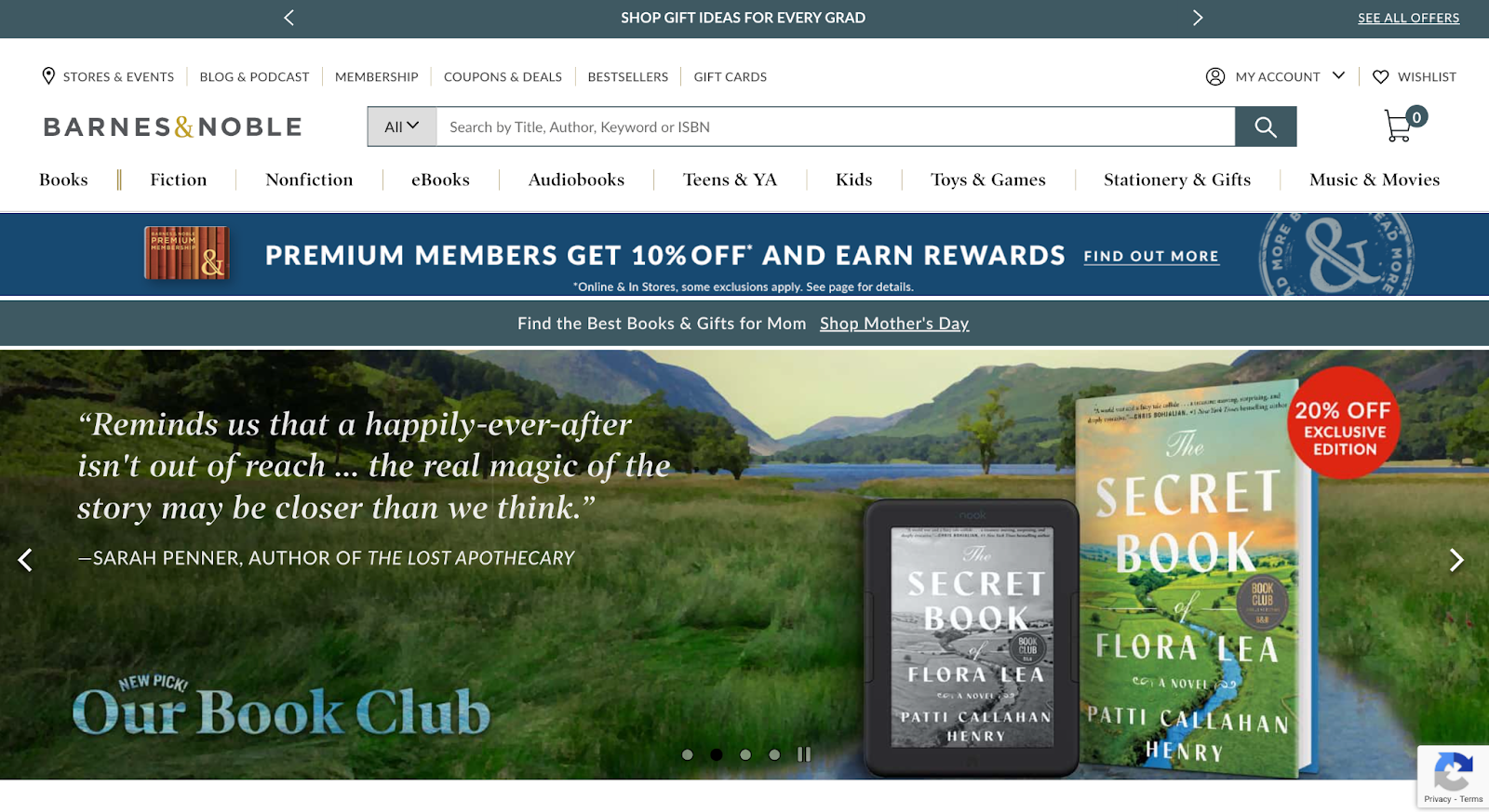
Barnes & Noble is another big retailer with an omnichannel strategy to envy (or emulate). The brand is a large bookstore that makes it easy for customers to shop.
Channels used include:
-
Retail locations
-
In-store pickup
-
Online website
-
Mobile app
-
Nook store
-
Podcast
Barnes & Noble has a number of channels, from big box stores to an all-encompassing online website to a mobile app to its own e-reader/ebook library. It even produces its own podcast, which isn’t necessarily a shopping channel but a great marketing/promotional channel for people to learn more about books they might be interested in.
Plus, B&N has its own members club (i.e., paid loyalty club) that provides a discount on books and helps loyal customers to keep track of their purchases.
15. Ring Concierge

Ring Concierge is a luxury jewelry and diamond engagement ring company based in New York, NY.
Channels used include:
-
Retail locations
-
Showroom
-
Pop-up shops
-
Online website
-
Social media platforms Facebook, Instagram, and Pinterest
The brand has only two NYC-based retail locations for customers to shop in, alongside an appointment-only showroom for couples looking to design an engagement ring. However, the brand does a great job of ensuring its in-store experience, online experience, and social media shopping experience are the same across the board.
16. Ava Estell
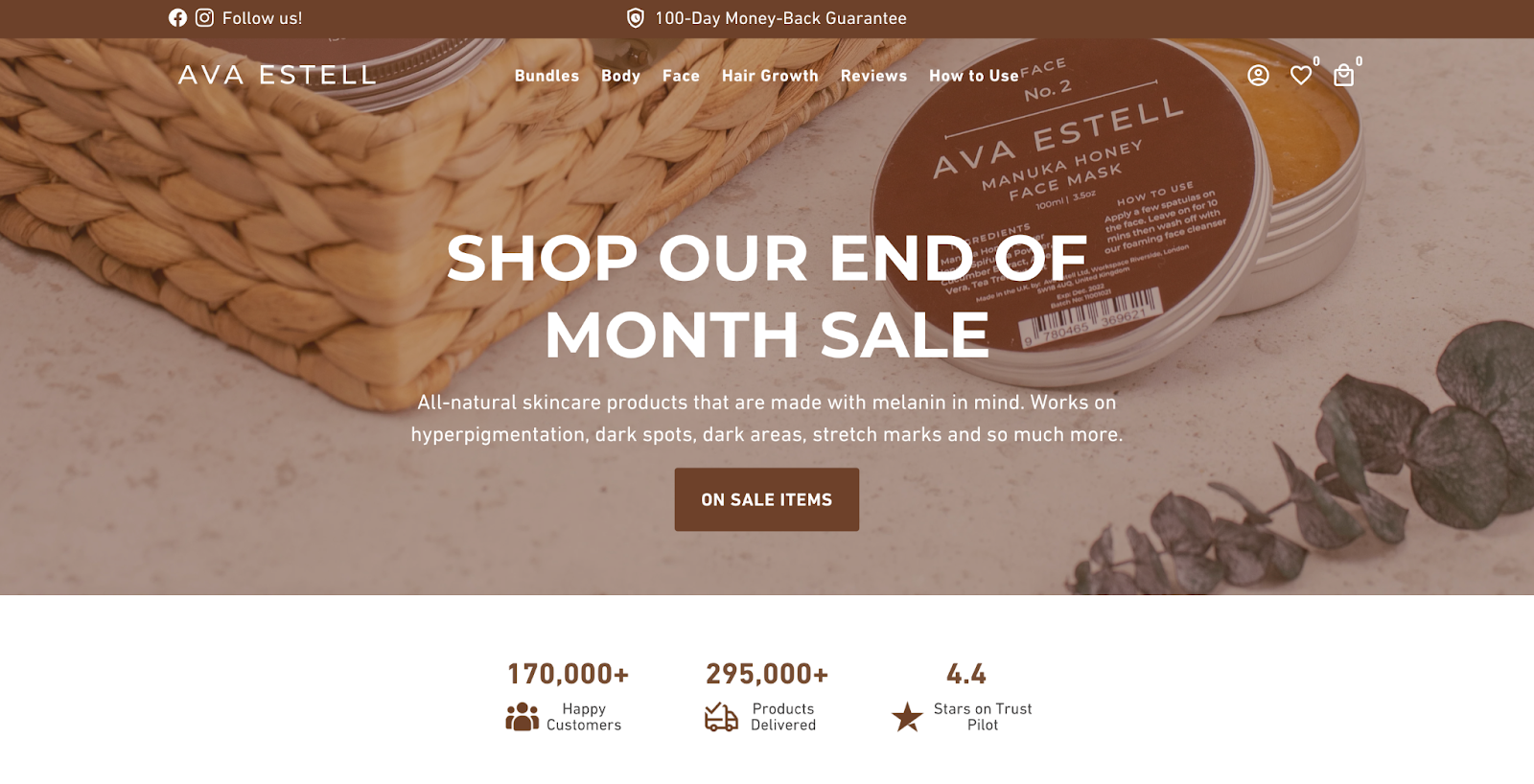
Ava Estell is a skincare brand focusing on darker skin and sensitive skin issues like hyperpigmentation and dark spots.
Channels used include:
-
Online website
-
Shoppable video
-
Pop-up shops
-
Social media platform Instagram
While the brand heavily emphasizes its online shopping channels, wanting to ensure its online store, shoppable video, and social platforms offer a great experience, Ava Estell has also been experimenting with live, in-person pop-up shops.
17. Apple
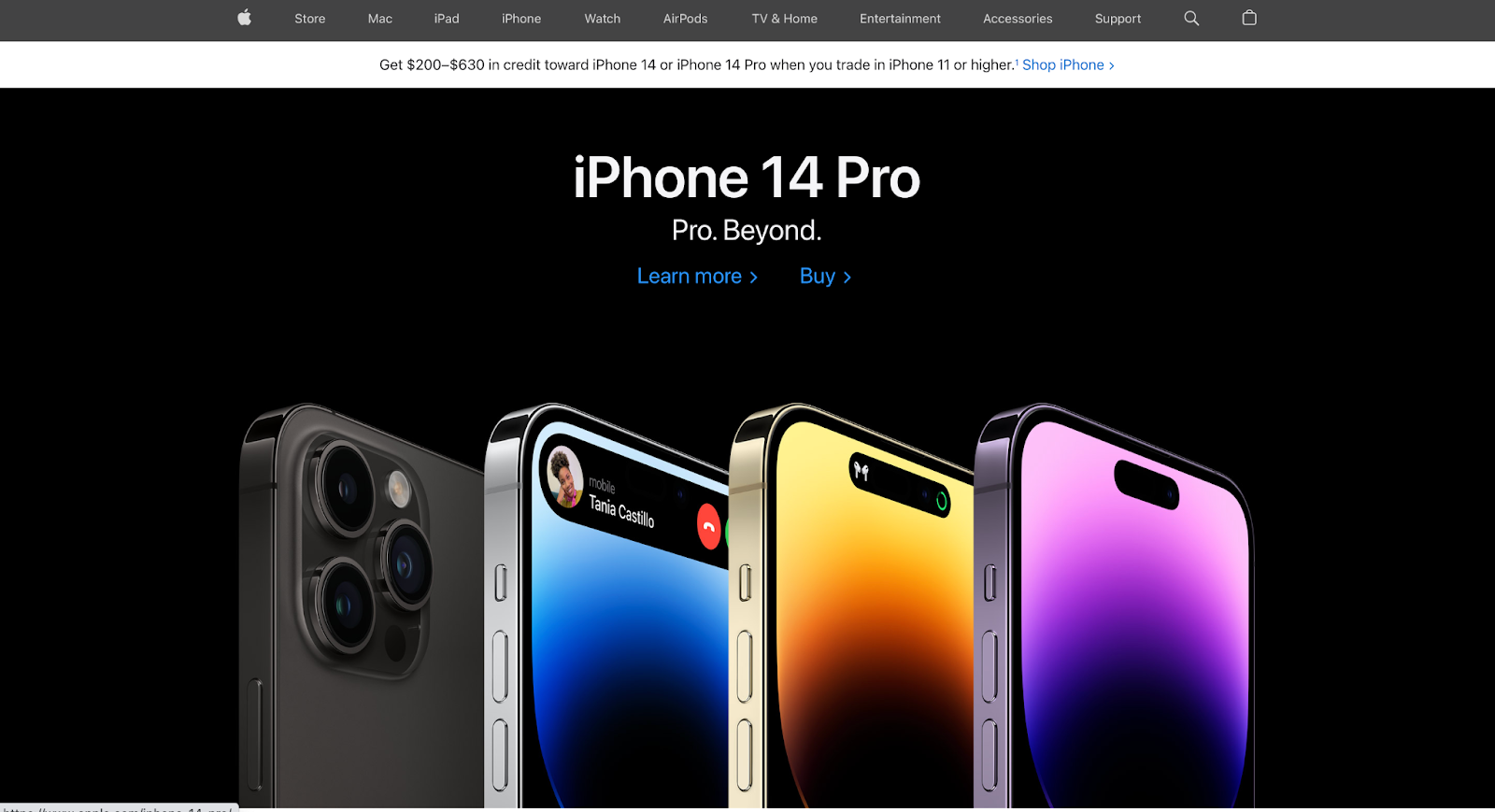
Apple is a well-known tech brand, selling nearly anything digital, from computers to phones to watches and other wearable tech.
Channels used include:
-
Retail locations
-
Online website
-
Amazon storefront
Not only is Apple’s shopping experience omnichannel across its in-person and online stores, but its device connectivity ensures customers’ products speak to each other. Texts can be read on watches, phones, and computers alike, as long as a customer’s iCloud account is linked. This feature helps to vastly increase customer loyalty.
18. Inyouths
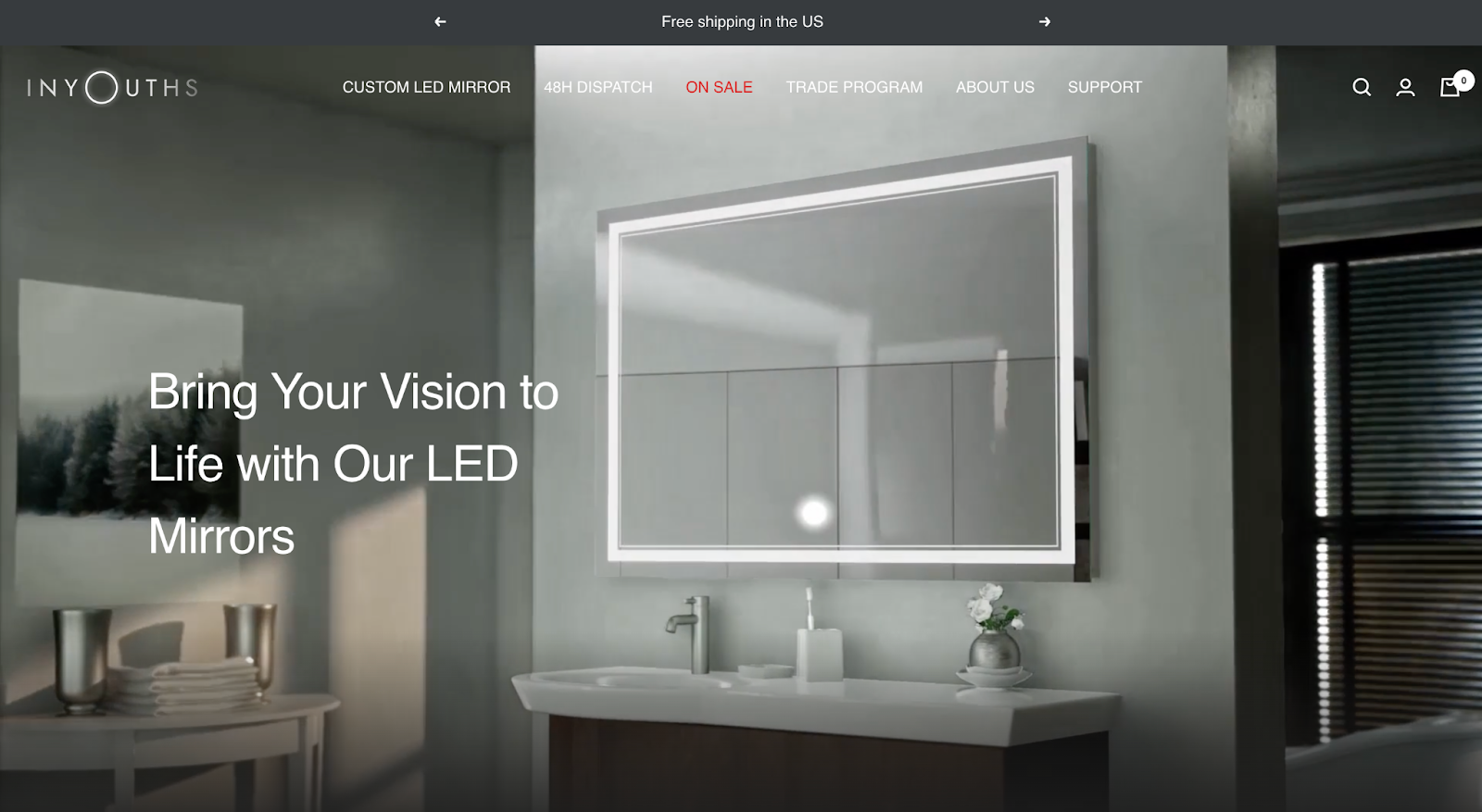
Inyouths is a luxury LED mirror brand, that helps to improve its customers’ home decor.
Channels used include:
-
Online website
-
Social media platforms Facebook and Pinterest
-
Trade program
Its trade program essentially incentivizes contractors, interior designers, and similar professions to include Inyouths products in their design plans.
Kevin Wang, Co-owner at Inyouths, shared this about the brand’s omnichannel retail strategy:
"To create an omnichannel retail/eCommerce strategy for Inyouths, I implemented several initiatives.
1. Launched an online marketplace—a platform that allows customers to shop directly from Inyouths’ own website, as well as our partner stores. This allows us to increase our reach and offer more shopping options for consumers.
2. Implemented email and social media campaigns to engage our existing customers, as well as reach out to potential ones. This way, we are able to increase brand awareness and get more people interested in our products.
3. Utilized sophisticated analytics tools to track customer data and create personalized marketing campaigns. This allows us to better understand our customers and target them with the right type of messaging."
19. Rothy’s
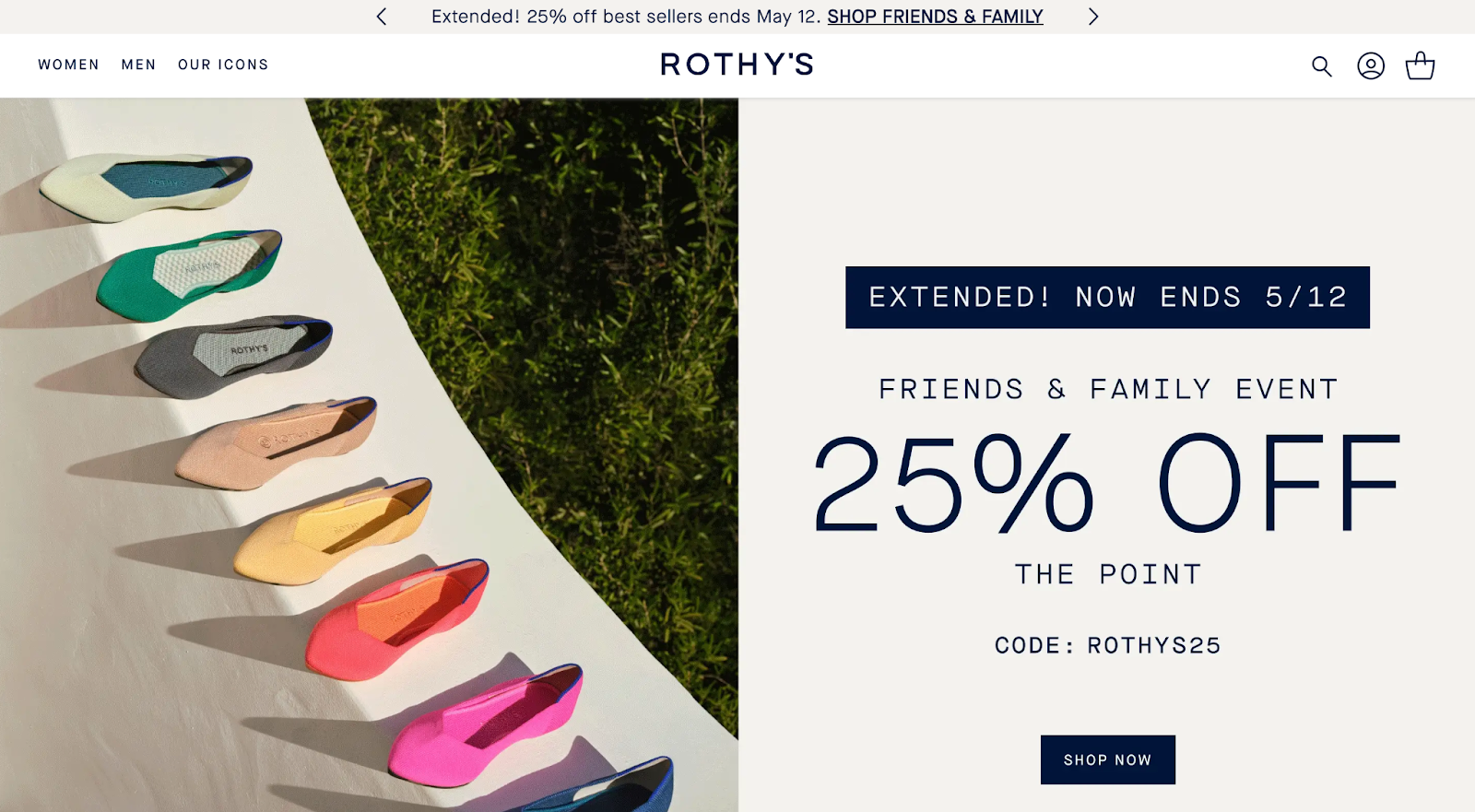
Rothy’s is a washable shoe brand that has been making a big splash in the DTC industry.
Channels used include:
-
Retail locations
-
Online website
-
Social media platforms Facebook, Instagram, and Pinterest
-
Bulk orders
Not only does Rothy’s do a great job offering an amazing omnichannel shopping experience, the brand has also recently leveled up its omnichannel customer service, ensuring that agents are always in-the-know of every customer’s purchases, past service issues, and more.
20. Azazie
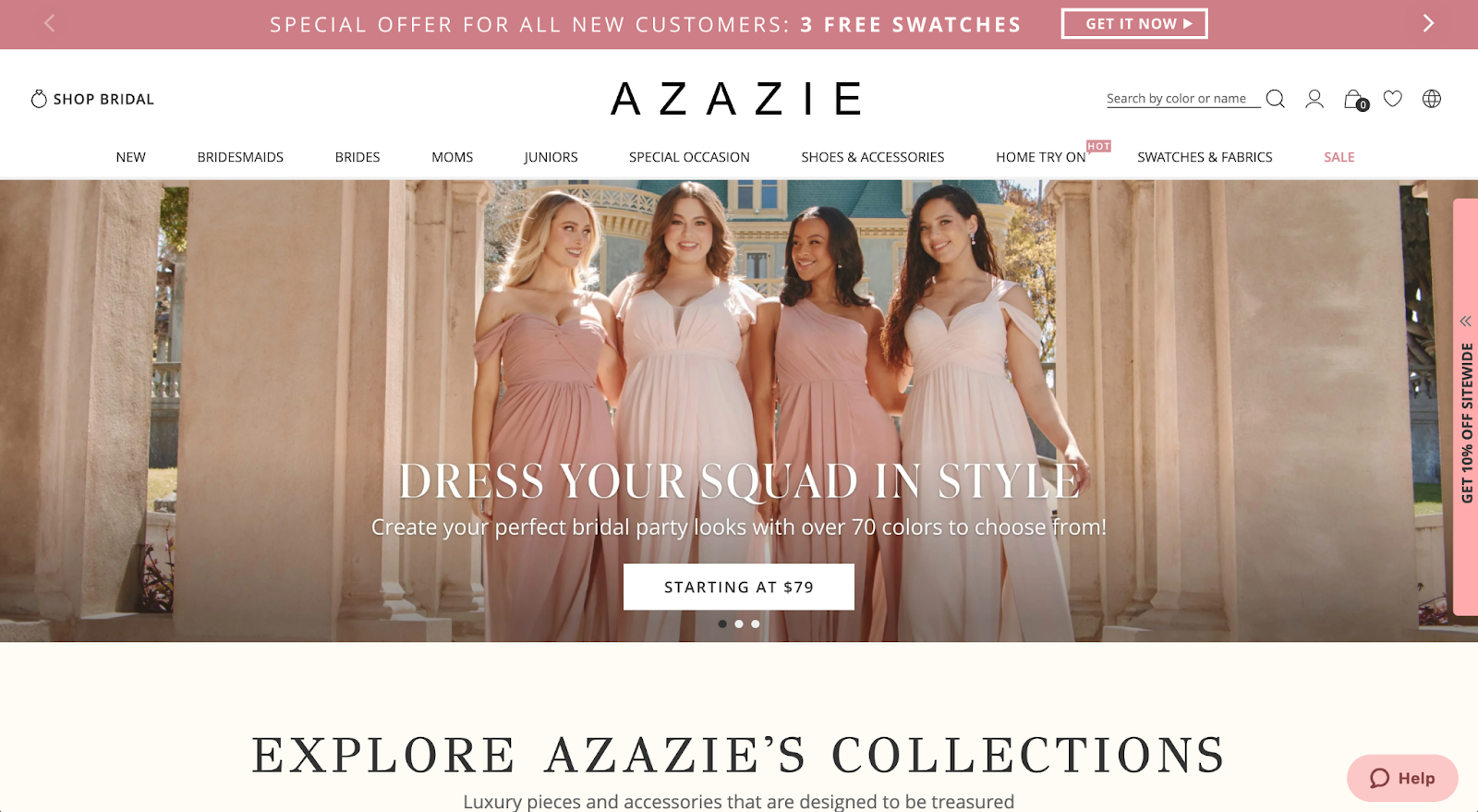
Azazie is a bridesmaid dress store that makes shopping for dresses that match a bride’s color scheme as easy as possible.
Channels used include:
-
Online website
-
Home try-on
-
Swatch orders
-
Social media platforms Instagram and Pinterest
While Azazie is a fully online brand, it makes the process as easy as if brides and their wedding parties could walk into a store. Brides can order fabric swatches to match colors and choose the best fit for their wedding. Then, Azazie offers an at-home dress try-on for bridesmaids to get the best possible fit. While customers can always do alterations at home, Azazie also offers completely custom sizing at purchase.
21. Dr. Dennis Gross
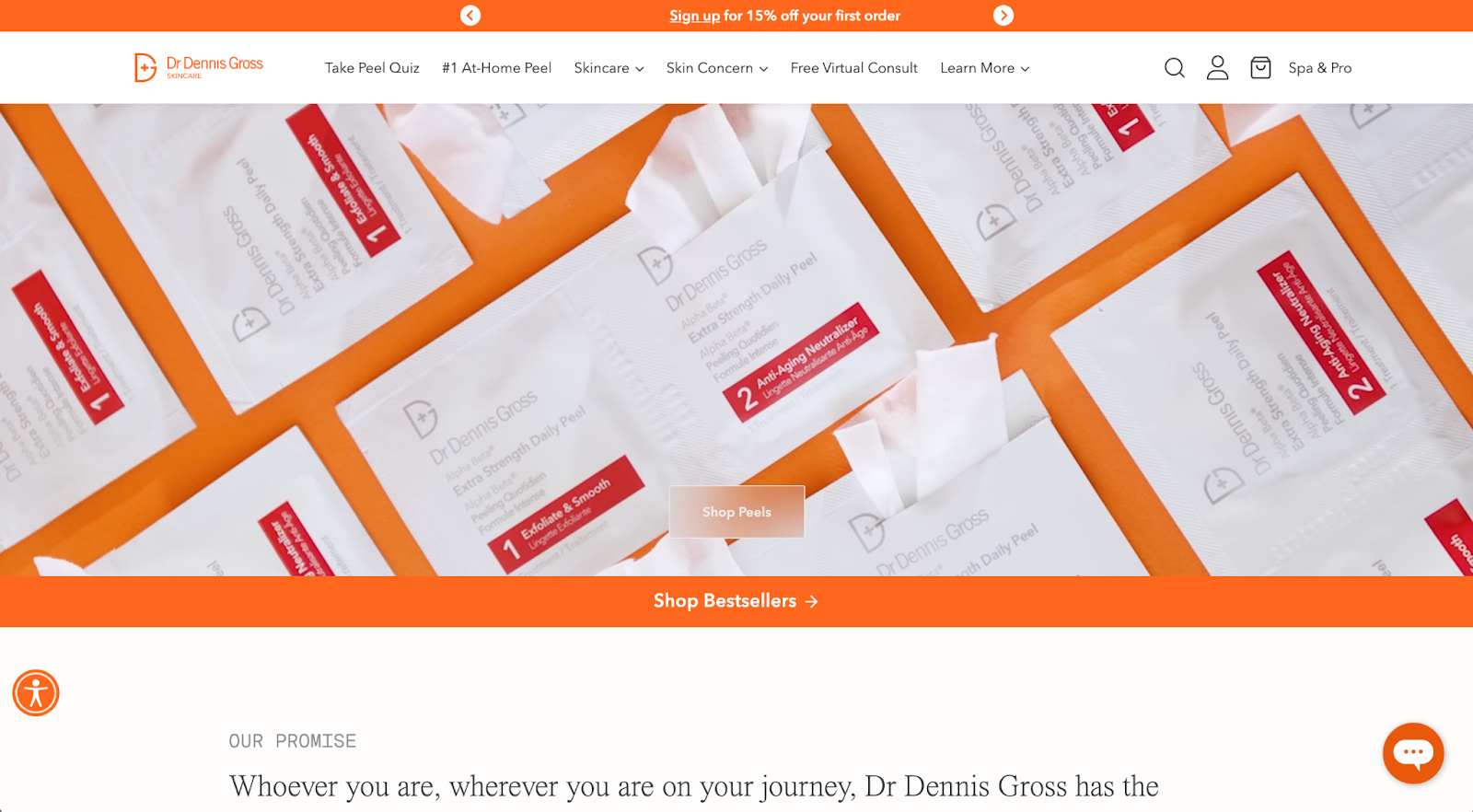
Dr. Dennis Gross is a skincare brand that partners with various retail locations like Sephora and Ulta but also offers an online customer experience.
Channels used include:
-
Retail partner locations
-
Online website
-
Social media platforms Facebook, Instagram, Pinterest, and TikTok
-
Amazon storefront
By using an Amazon storefront alongside its online store and social media shops, Dr. Dennis Gross ensures its products are always readily available no matter where customers shop.
22. Pepper
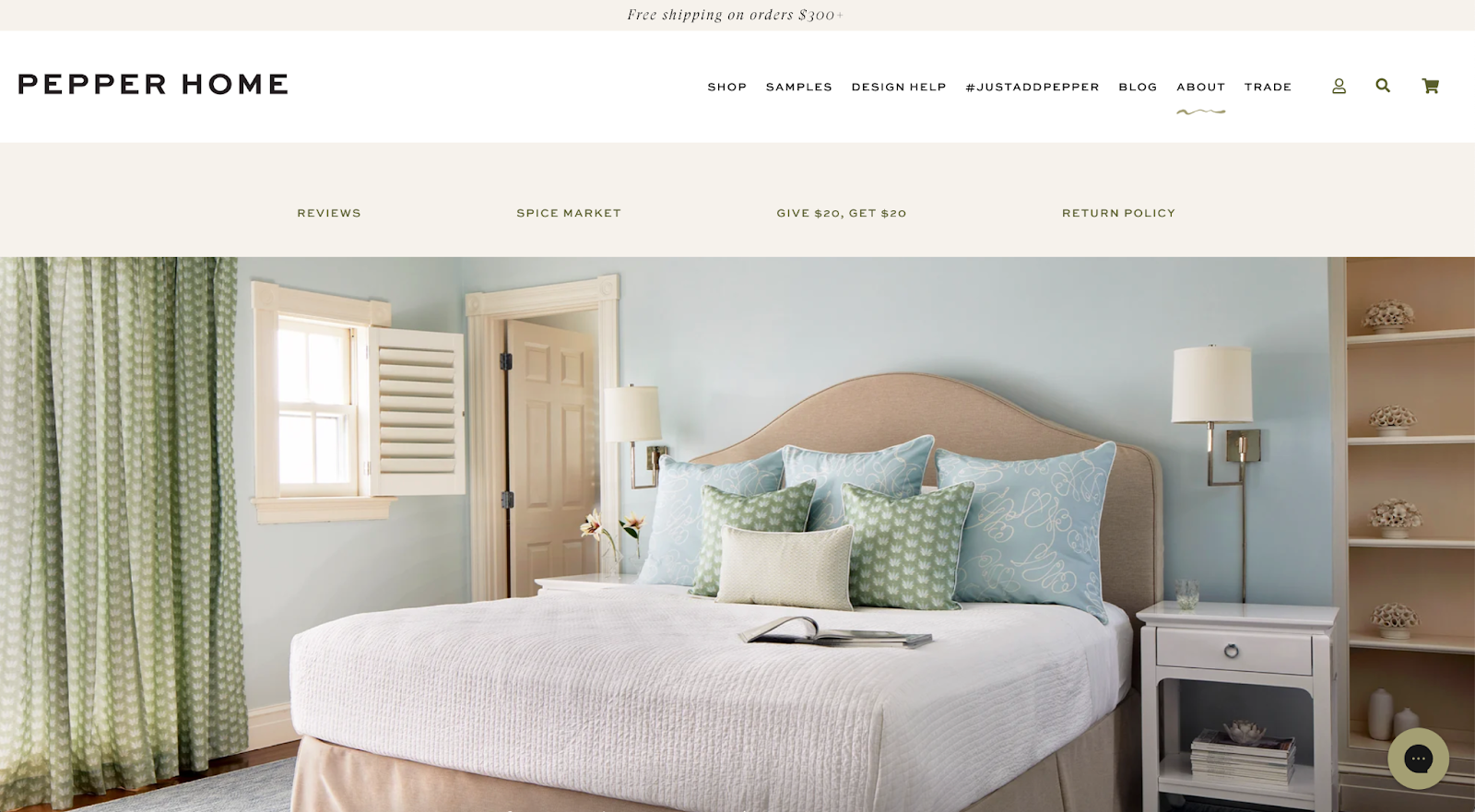
Pepper is a home decor site focusing heavily on curtains and wallpaper—and the brand even offers swatches, calculators for sizing, and more to help customers always find the right fit.
Channels used include:
-
Online website
-
Swatch orders
-
In-house design assistance
-
Trade program
-
Social media platforms Facebook, Instagram, and Pinterest
Erin Banta, co-founder of Pepper, shares:
"Our omnichannel marketing strategy consists of a mixture of paid and organic social media. We utilize Instagram, Facebook, and Pinterest ads, as well as having placements on Google Shopping.
Alternatively, we’re able to generate exposure through organic social as well, utilizing everything from Instagram posts, stories, and reels, to Pinterest boards, to email campaigns, and to blog posts.
We’re just beginning to get our feet wet with TikTok. Furthermore, our website offers a free suite of design resources that gives our customers the opportunity to interact with our product and take their customer journey into their own hands."
23. DSW
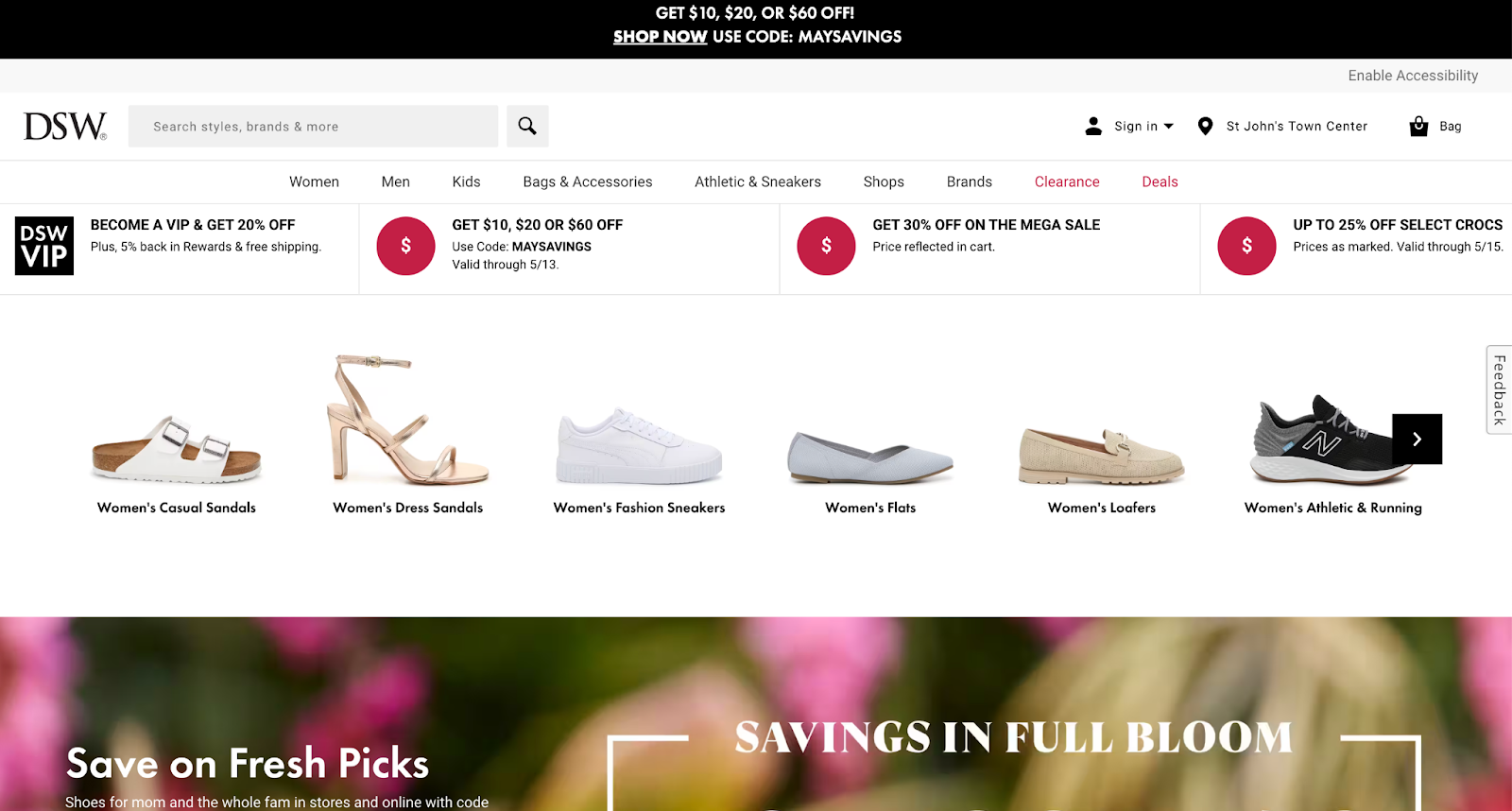
DSW, or Designer Shoe Warehouse, is a massive shoe retailer, carrying a number of various brands.
Channels used include:
-
Retail locations
-
Online website
-
Mobile app
-
Social media platforms Facebook, Instagram, and Pinterest
DSW’s omnichannel retail strategy focuses on ensuring the buying process is as seamless as possible, no matter where customers are—in store, online, on the app, or on social media.
24. The Sill
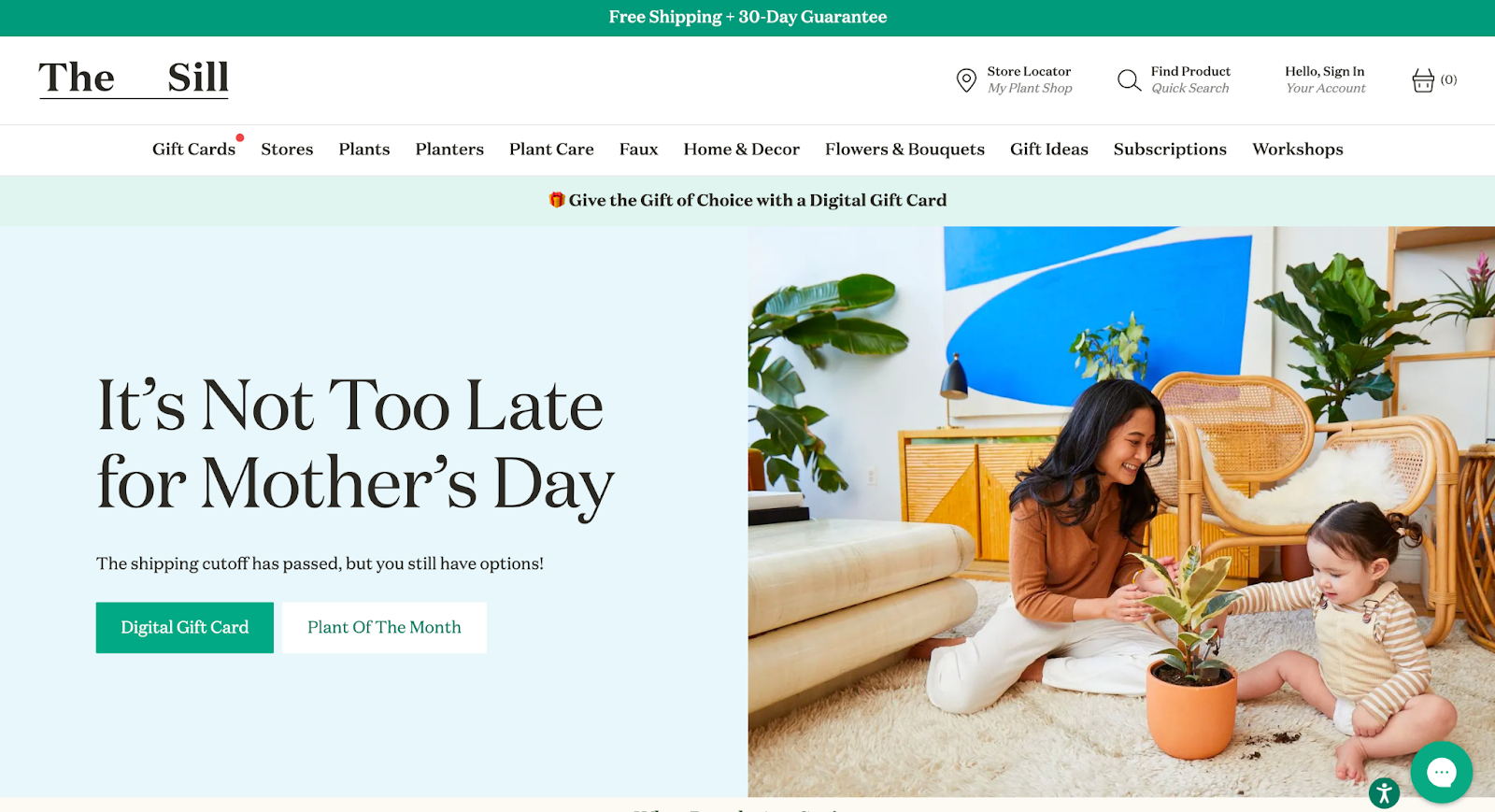
The Sill is a plant store that has a handful of in-store locations while focusing primarily on its online channels.
Channels used include:
-
Retail locations
-
Workshops
-
Online website
-
Social media platforms Facebook, Instagram, and Pinterest
The Sill has a few in-person locations in a few big metropolitan areas, like New York, San Francisco, and Chicago. But it also offers online sales, social media shops, and more to appeal to as many customers—and offer as seamless of an experience—as possible.
25. Our Moments
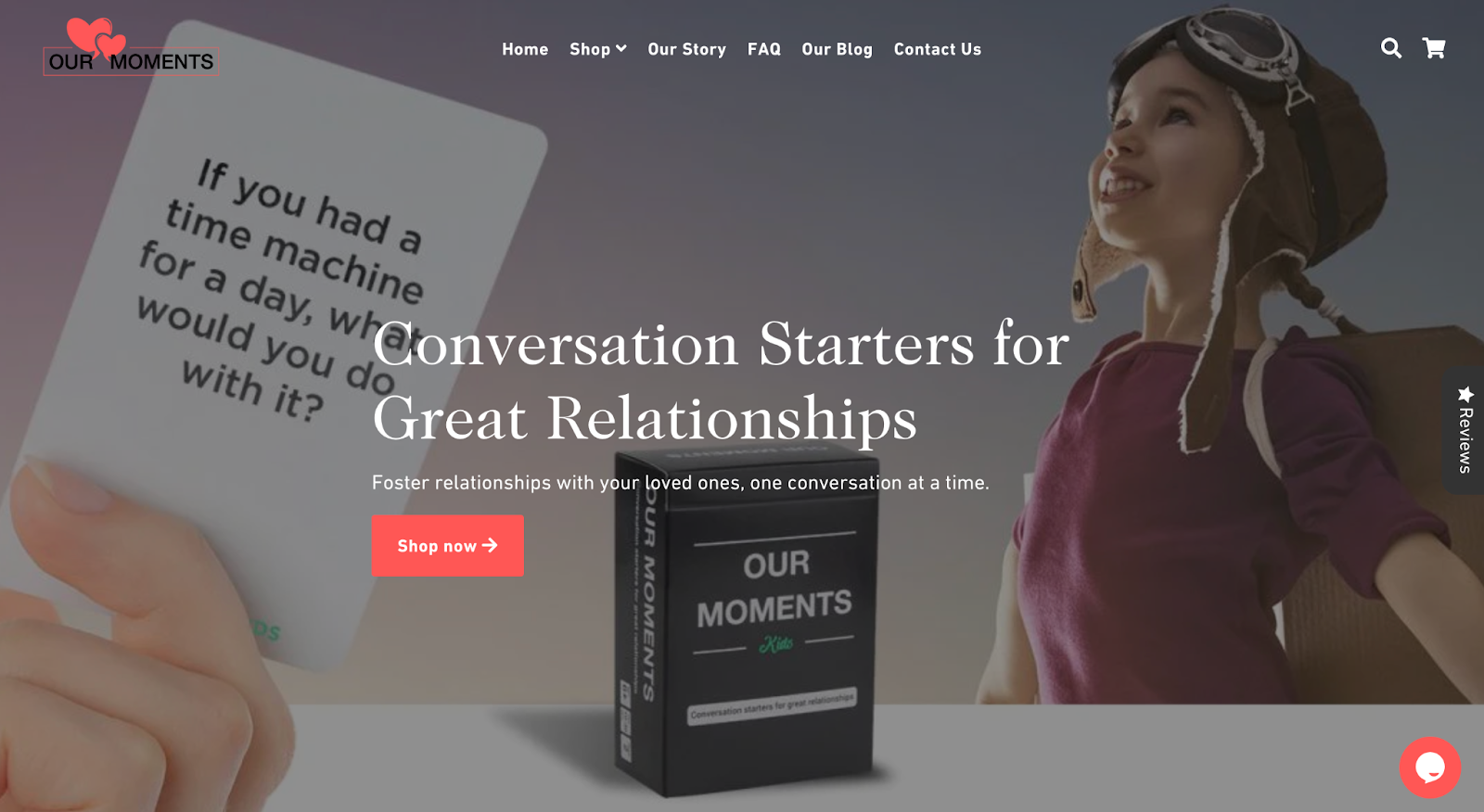
Our Moments is a conversational card game whose channels span across a number of online marketplaces to reach its customers across the board.
Channels used include:
-
Online website
-
Social media platforms Facebook, Instagram, and Pinterest
-
Amazon storefront
-
Walmart seller
Alon Saggie, owner of Our Moments, shared:
"At Our Moments, we understand the importance of meeting buyers wherever they spend time and feel comfortable buying. That's why we've implemented an omnichannel eCommerce strategy, selling on Amazon.com, other Amazon marketplaces, Facebook, Pinterest, as well as our own Shopify store. We also realized the untapped opportunity with Walmart.com and founded Sellegr8 to help Walmart Marketplace sellers dominate on Walmart.com. We've found that most of our customers are omnichannel eCommerce brands who sell both on Amazon and Walmart."
Gather inspiration from these omnichannel retail examples
Kevin Miller, digital marketer and winner of the 2021 Entrepreneur of the Year Award from American Business Awards, says,
“Implementing an omnichannel strategy guarantees you the best ROI for your marketing power. Brands need diversified but cohesive messaging to reach the most people who may be interested in what they offer.”
Break out into new channels for your customers, whether it’s a retail partnership, social media store, online marketplace, or what you have. The power of shoppable video can also greatly assist in your omnichannel strategy. Get started today with Videowise.
Share

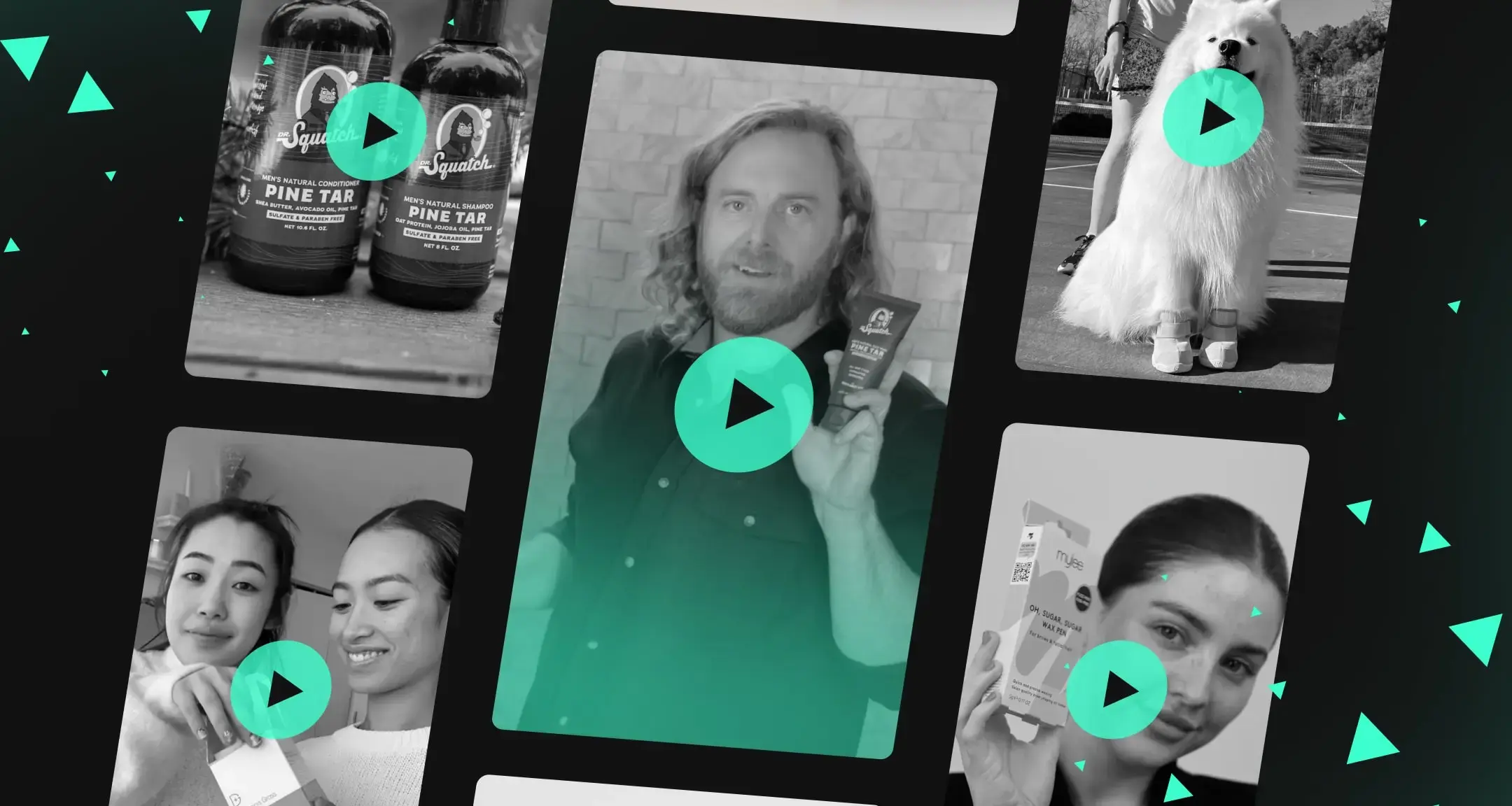
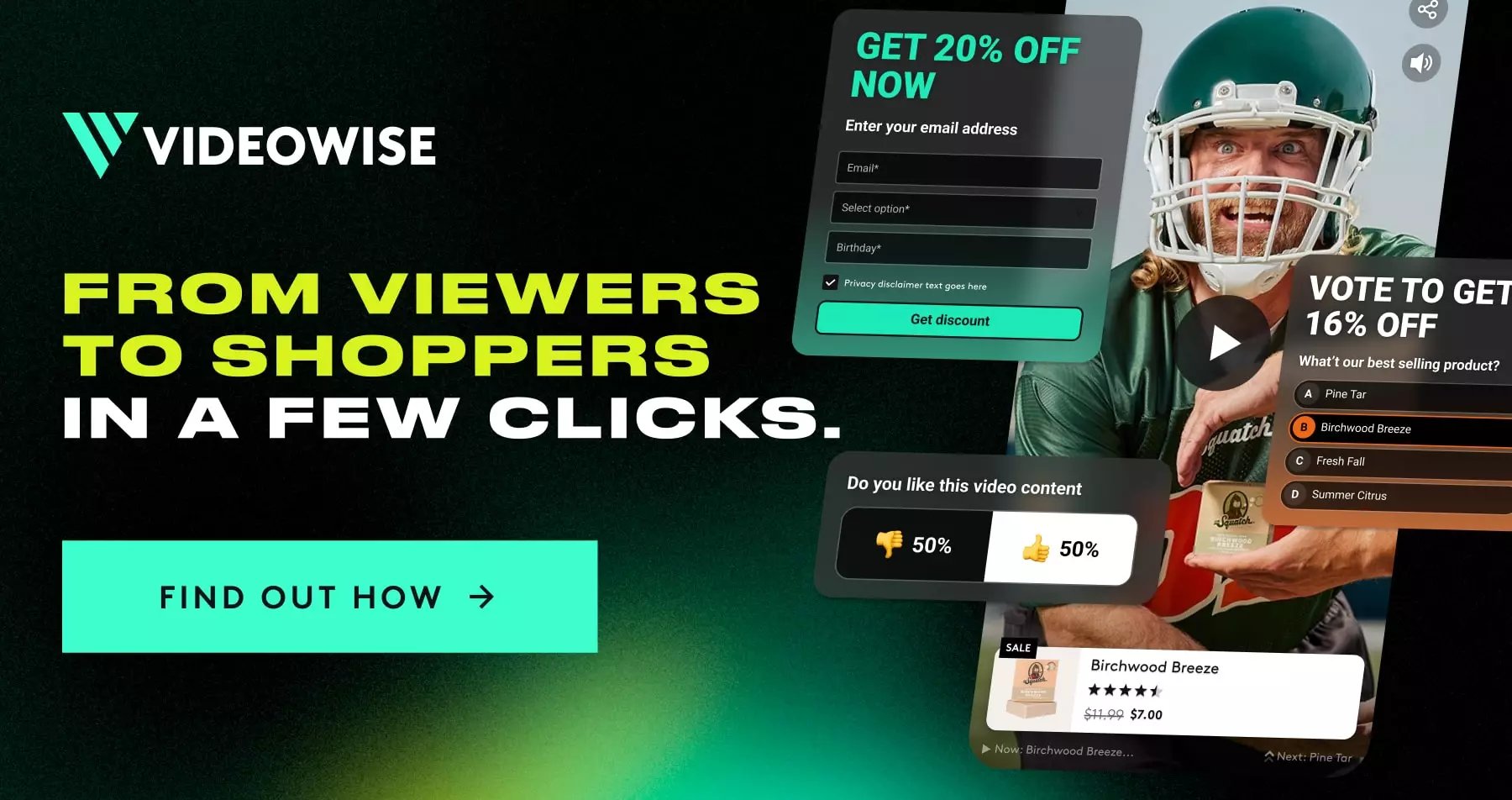


.jpg?width=420&height=420&name=live%20shopping%20top%205%20fashion%20(1).jpg)